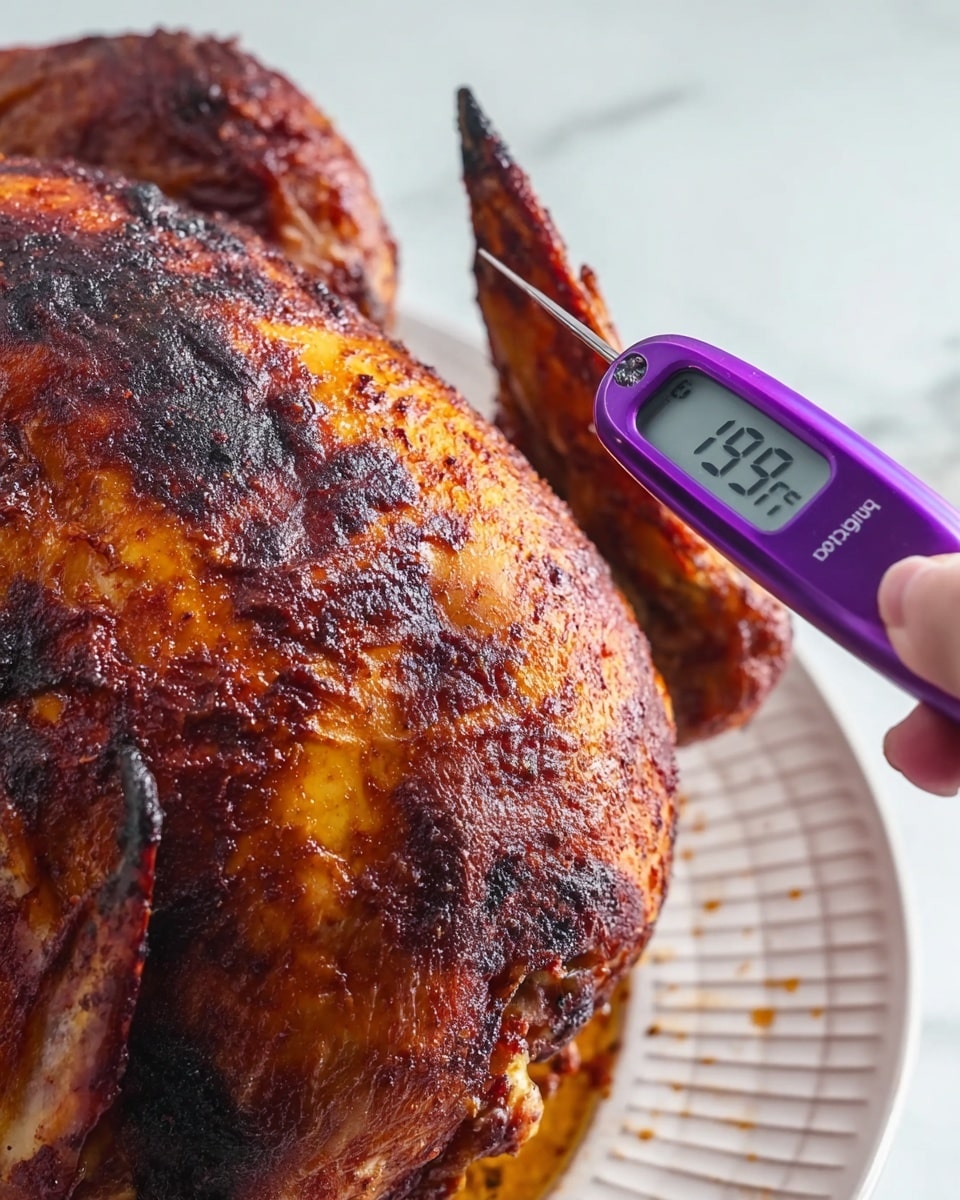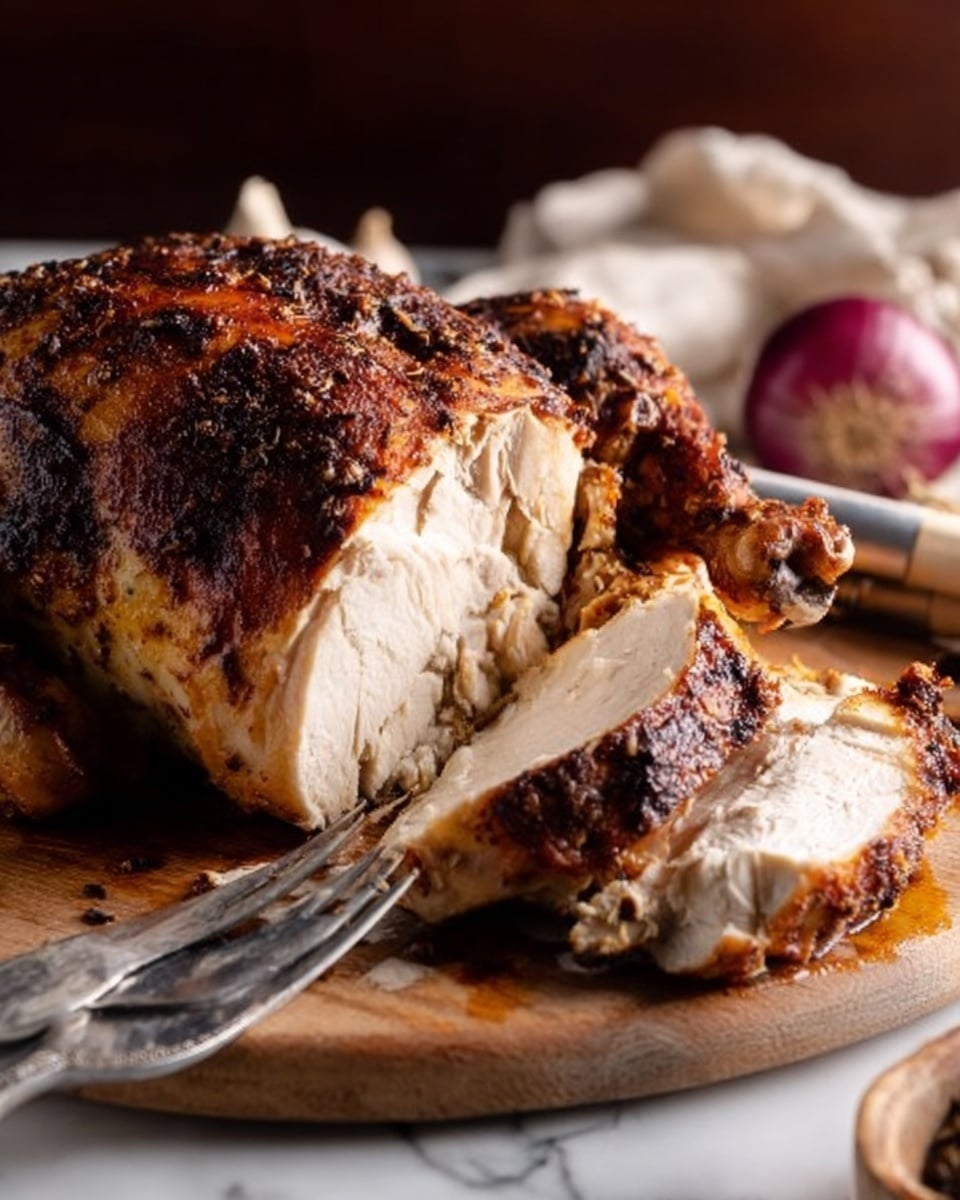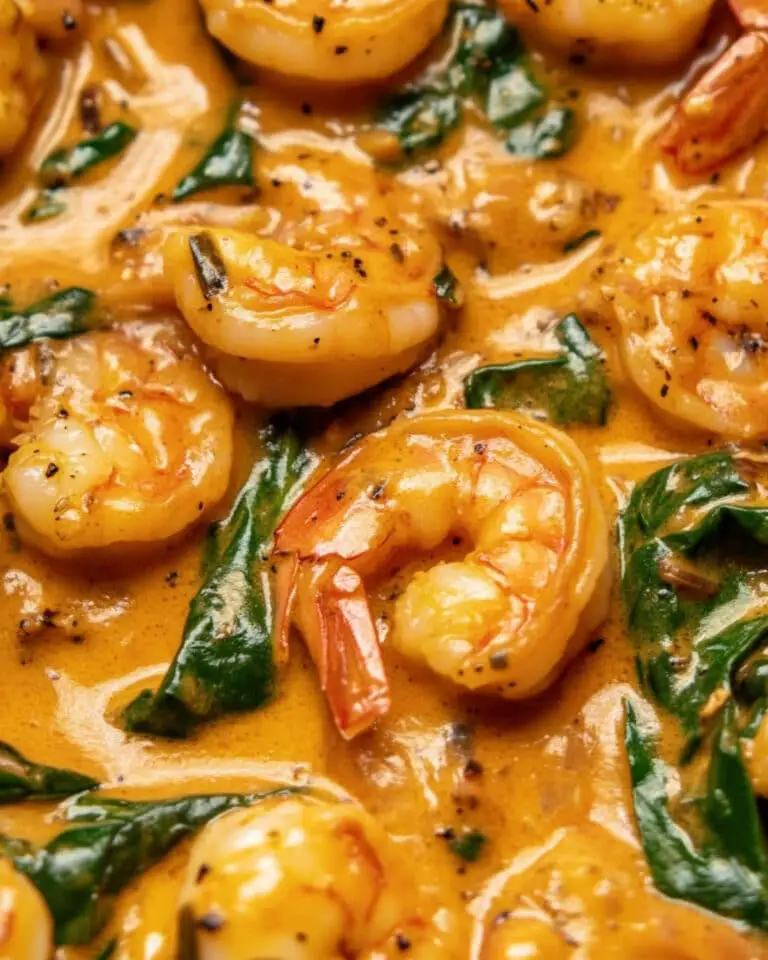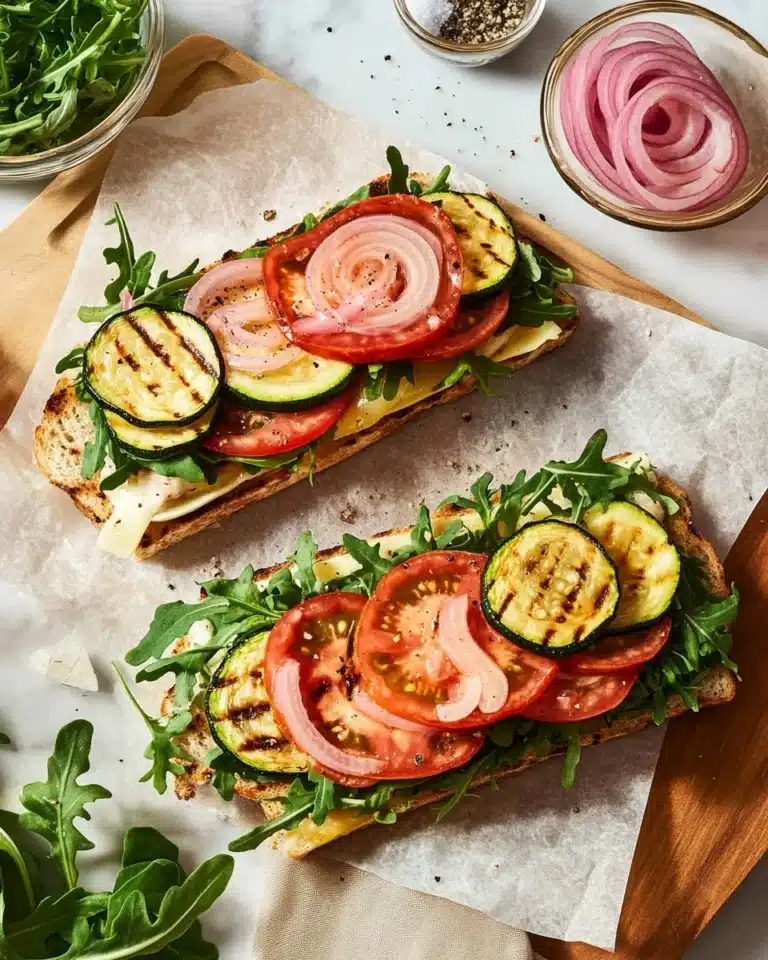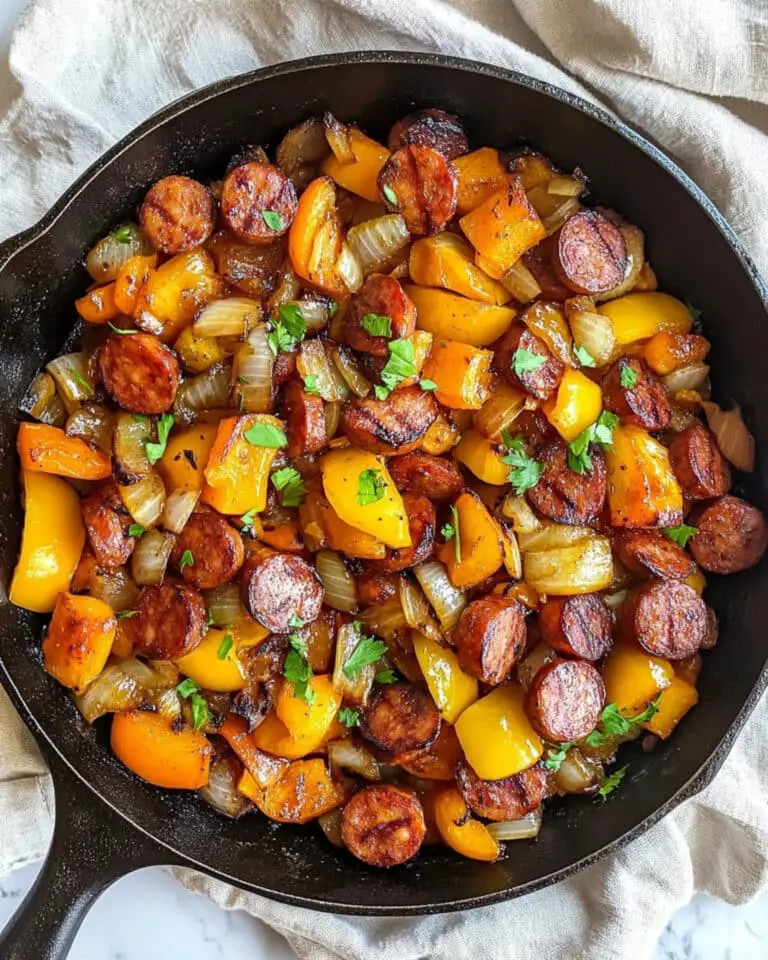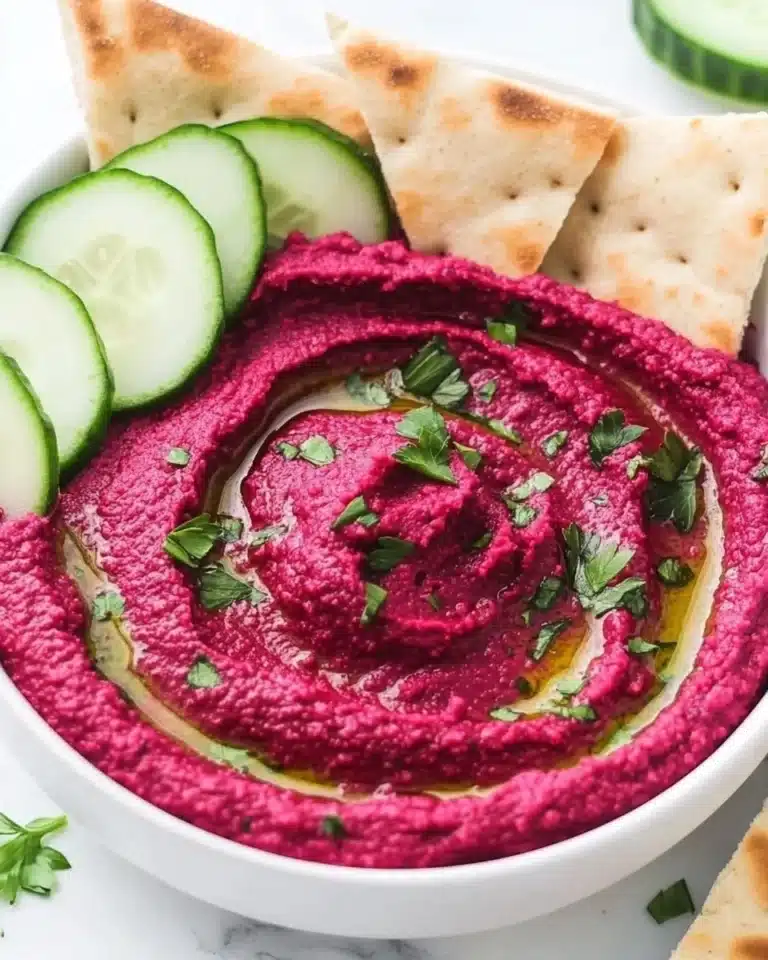If you’ve ever wondered how to get that perfectly crispy skin and juicy turkey meat without spending hours in the oven, then you’re in for a treat with this Deep-Fried Turkey Recipe. I absolutely love how this turns out every time—crispy on the outside, tender and flavorful inside, and it’s surprisingly quick. Whether you’re cooking for the holidays or just want to impress your friends at the next backyard gathering, this method will become your new favorite way to prepare turkey.
Why You’ll Love This Recipe
- Super Crispy Skin: Deep frying seals in moisture and crisps up the skin like nothing else.
- Speedy Cooking: You’re done in about 45 minutes, freeing up time for side dishes or fun.
- Juicy Interior: No drying out here—just tender, flavorful meat every single time.
- Perfect for Outdoors: Keeps your kitchen cool and smells amazing outside.
Ingredients You’ll Need
Choosing fresh and straightforward ingredients is key to letting the turkey shine in this deep-fried rendition. Each component plays a specific role in flavor and texture, so don’t skip on the Creole seasoning or the onion—it’s a simple trick that adds depth to the taste.
- Peanut oil: Preferred for deep frying thanks to its high smoke point and neutral flavor; it’s what gives the turkey that crispy crust without imparting odd tastes.
- Whole turkey: Pick a 12-pound bird for this recipe; make sure it’s fully thawed and dried to avoid oil splatters.
- Creole seasoning: Adds a wonderful punch of spice and herbs, giving the turkey a lively flavor that’s not overpowering.
- White onion: This goes inside the cavity with the turkey to add subtle sweetness and aroma during frying.
Variations
I love to tweak this deep-fried turkey recipe depending on the occasion or what I have on hand. Playing around with seasonings or additions can easily personalize the dish and make each meal feel special.
- Spice It Up: I sometimes swap Creole seasoning for Cajun seasoning for a bit more heat, and my family goes crazy for the extra kick.
- Herb Infusion: Adding fresh herbs like rosemary or thyme inside the cavity alongside the onion gives a delectable aromatic twist.
- Smoky Flavor: For a smoky note, I’ve brushed the turkey with a thin layer of smoked paprika before seasoning.
- Low-Sodium Version: Use a salt-free seasoning blend if you need to watch your sodium intake—still delicious!
How to Make Deep-Fried Turkey Recipe
Step 1: Prep Your Turkey and Oil Safely
First things first: patience is key here. Make sure your turkey is completely thawed and then pat it dry thoroughly with paper towels. Moisture is the enemy of hot oil, and trust me, you don’t want dangerous splatters. Next, rub the turkey inside and out with Creole seasoning—don’t forget to season inside the cavity for even flavor. Also, make sure the neck opening is at least 2 inches wide so that oil can circulate freely inside while frying. Meanwhile, heat your peanut oil in a large fryer or stockpot to 400°F; I use a thermometer that clips on, which really helps keep an eye on the temperature.
Step 2: Carefully Lower the Turkey into Oil
Once the oil hits the right temp, turn off the heat before adding the turkey to keep things safe. Place the onion inside the fryer basket—you want that sweet aroma infusing the meat—and then carefully lower the turkey, neck-end first, just like I do to avoid any sudden oil overflow or splashes. Slowly immerse the bird completely, then turn the heat back on and adjust it to maintain around 350°F for cooking. This step makes all the difference in safety and even cooking.
Step 3: Fry the Turkey to Perfection
Maintain your oil temperature at 350°F for about 45 minutes, roughly 3 and a half minutes per pound. It’s tempting to speed up the process, but trust me, slow and steady wins the crispy succulent battle here. Keep a close eye—the turkey is ready when an instant-read thermometer inserted into the thickest thigh reads 165°F to 180°F. If your temp rises above 180, it’ll dry out the meat, so patience is key. When done, carefully lift the basket out and place the turkey on a platter lined with paper bags to drain the excess oil for about 10 to 15 minutes.
Pro Tips for Making Deep-Fried Turkey Recipe
- Dry the Turkey Completely: I learned the hard way that extra moisture causes dangerous oil splatters, so pat down that bird like a pro.
- Use a Reliable Thermometer: Keeping track of oil and meat temps makes all the difference between juicy and undercooked or burnt.
- Don’t Crowd the Pot: If your fryer is smaller, cook two smaller turkeys separately instead of one big one to maintain perfect oil temps.
- Safety First Always: I always do this outdoors away from any structures and keep a fire extinguisher handy—better safe than sorry.
How to Serve Deep-Fried Turkey Recipe
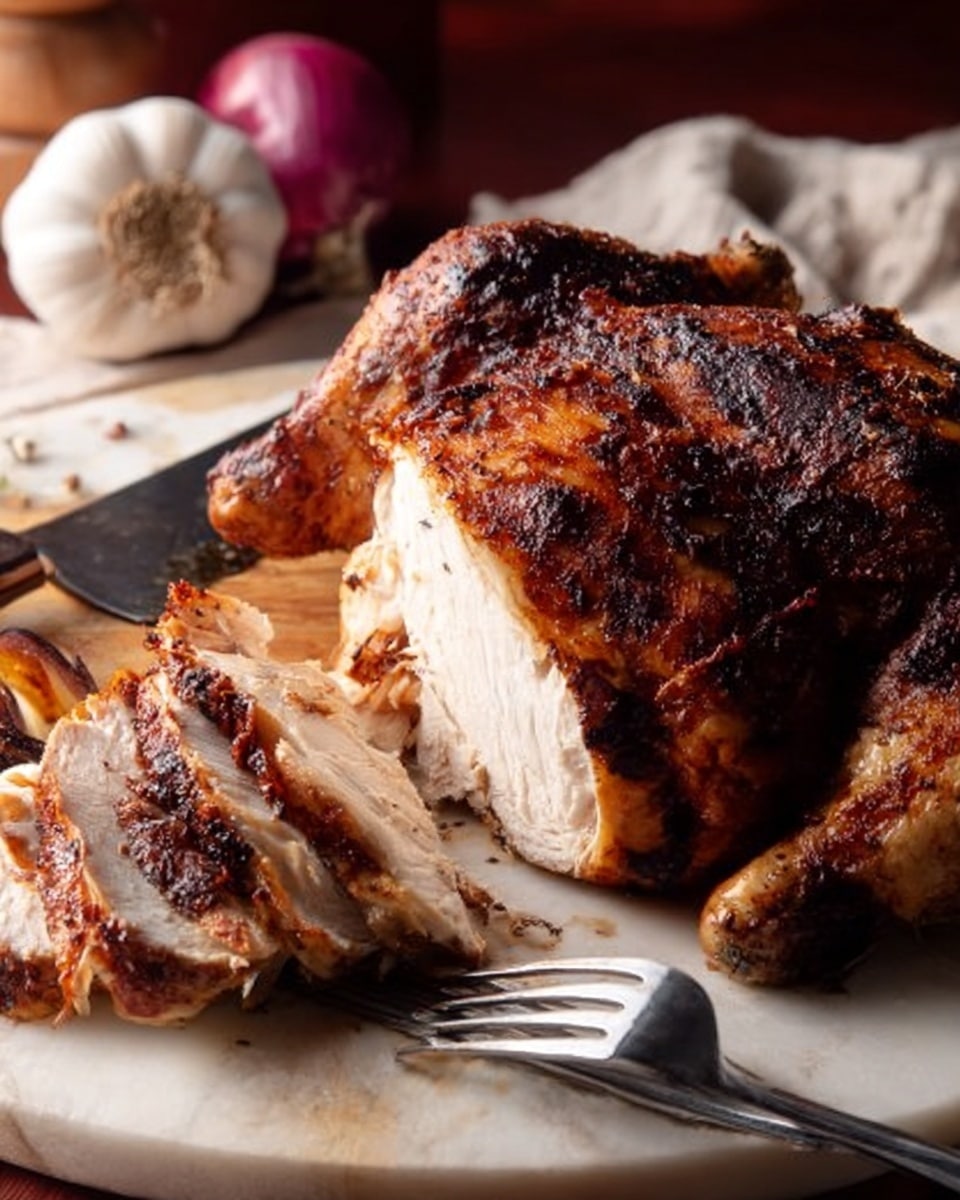
Garnishes
I love to keep it simple and classic with fresh rosemary sprigs and a few lemon wedges around the platter. The herbs brighten the rich flavor, while lemon adds a lovely zest when squeezed on the meat. Sometimes, I sprinkle freshly chopped parsley over the carved slices for a pop of color and freshness—it’s such a simple touch but really elevates the presentation.
Side Dishes
For sides, my go-tos are creamy mashed potatoes with gravy, buttery green beans, and a tangy cranberry sauce to balance the richness. I’ve also paired this turkey with sweet corn pudding or classic southern baked mac and cheese for a comforting Southern-style feast that always gets rave reviews.
Creative Ways to Present
For Thanksgiving dinners or special occasions, I sometimes set the turkey on a rustic wooden board surrounded by colorful roasted vegetables like carrots, Brussels sprouts, and beets. Adding fall leaves and mini pumpkins around the table makes the presentation festive and inviting. Another fun idea is carving the turkey right at the table to showcase that crispy skin and juicy interior, which always makes guests ooh and ahh.
Make Ahead and Storage
Storing Leftovers
Once your deep-fried turkey has cooled to room temperature, I usually carve it and store leftovers in airtight containers in the refrigerator. It stays juicy if you reheat it gently. I’ve found that cutting the meat off the bone first helps save space and makes reheating easier later.
Freezing
I’ve frozen leftover turkey slices wrapped tightly in plastic wrap and foil, then popped them into freezer bags for up to three months. When you defrost slowly in the fridge overnight, the turkey keeps its moisture and flavor surprisingly well.
Reheating
The best way I’ve found to reheat this turkey is by gently warming it in the oven at 325°F, wrapped in foil to keep it moist. It takes about 15-20 minutes depending on portion size. Avoid the microwave if you want to keep the crispy skin intact—it tends to get rubbery.
FAQs
-
Can I deep-fry a frozen turkey?
Never deep-fry a frozen turkey. It’s very dangerous because the frozen ice causes the hot oil to splatter or even boil over, which can lead to serious burns or fires. Always make sure your turkey is fully thawed and dried before you start frying.
-
What size turkey is best for deep-frying?
For safety and even cooking, I recommend using a turkey that weighs between 10 and 14 pounds. Bigger than that, and it becomes harder to maintain oil temperature and safely fit the bird into most fryers.
-
What oil should I use for deep-frying turkey?
Peanut oil is ideal because it has a high smoke point and a neutral flavor that won’t interfere with the turkey’s taste. Other oils like canola or vegetable oil can also work, but avoid oils with low smoke points.
-
How do I know when my deep-fried turkey is done?
The most reliable way is to use an instant-read thermometer inserted into the thickest part of the thigh. It should read at least 165°F to be safe for eating. The skin should be golden and crispy, and juices should run clear.
-
Is deep-fried turkey healthier than roasted turkey?
Deep-fried turkey is not necessarily healthier since it absorbs some oil during frying, but it cooks faster and usually stays juicier without needing added butter or basting. If you’re mindful about oil type and quantity, it’s still a tasty alternative.
Final Thoughts
This deep-fried turkey recipe has become a real standout in my cooking repertoire. I used to struggle with dry turkey until I tried frying, and now it’s my go-to for holiday and special meals alike. If you’re ready to wow your guests with crispy skin, juicy meat, and that irresistible fried aroma, I wholeheartedly encourage you to give this recipe a try. You’ll find it’s easier than it sounds, and the results are downright mouthwatering—trust me, your family and friends will thank you!
Print
Deep-Fried Turkey Recipe
- Prep Time: 30 minutes
- Cook Time: 45 minutes
- Total Time: 75 minutes
- Yield: 16 servings
- Category: Main Course
- Method: Frying
- Cuisine: American
Description
This deep-fried turkey recipe delivers a juicy, tender interior with a perfectly crispy outer crust. Ideal for outdoor holiday cooking, it frees up your oven while creating a flavorful and impressive centerpiece. The turkey is seasoned with Creole spices and cooked in hot peanut oil to ensure even cooking and rich taste.
Ingredients
Frying Ingredients
- 3 gallons peanut oil for frying, or as needed
Turkey and Seasoning
- 1 (12 pound) whole turkey, neck and giblets removed
- 0.25 cup Creole seasoning
- 1 medium white onion
Instructions
- Prepare Oil and Platter: Gather all ingredients. Fill a turkey fryer or large stockpot with enough peanut oil to fully submerge the turkey while leaving space to prevent overflow. Heat the oil to 400°F (200°C). Line a large platter with food-safe paper bags to catch excess oil after frying.
- Season the Turkey: Rinse the turkey under cold water and thoroughly pat dry with paper towels to remove moisture. Rub Creole seasoning generously inside the cavity and all over the skin. Ensure the neck hole is open at least 2 inches to allow oil to flow freely into the cavity during frying.
- Lower Turkey Into Oil: Turn off the heat source to safely place the turkey. Place the whole onion into the fryer’s drain basket, then place the turkey into the basket neck-end first. Slowly lower the basket into the hot oil until the turkey is completely submerged. Be cautious to avoid oil splashing.
- Fry the Turkey: Turn the heat source back on and maintain the oil temperature at 350°F (175°C). Cook the turkey for about 45 minutes, or approximately 3.5 minutes per pound, until the meat is no longer pink near the bone and the juices run clear.
- Check Doneness and Drain: Carefully lift the basket from the oil and allow excess oil to drain. Use an instant-read thermometer inserted into the thickest part of the thigh near the bone; the internal temperature should reach at least 165°F (74°C) but not exceed 180°F (80°C).
- Rest and Serve: Transfer the turkey to the prepared platter lined with paper to finish draining for 10 to 15 minutes. Serve warm and enjoy the crispy, flavorful deep-fried turkey.
Notes
- Deep-frying turkey outdoors is a great way to free up oven space during holidays and special events.
- This method produces a juicy and tender bird with a crispy skin that’s difficult to achieve with traditional roasting.
- Ensure the turkey is completely dry before seasoning and frying to prevent dangerous oil splatters.
- Maintain proper oil temperature throughout frying to cook the bird evenly and prevent grease absorption.
Nutrition
- Serving Size: 1 serving (approx. 3 oz cooked turkey)
- Calories: 603 kcal
- Sugar: 0 g
- Sodium: 571 mg
- Fat: 34 g
- Saturated Fat: 9 g
- Unsaturated Fat: 0 g
- Trans Fat: 0 g
- Carbohydrates: 2 g
- Fiber: 0 g
- Protein: 69 g
- Cholesterol: 229 mg

